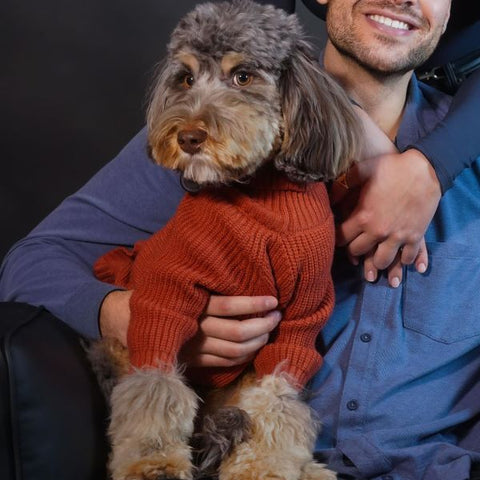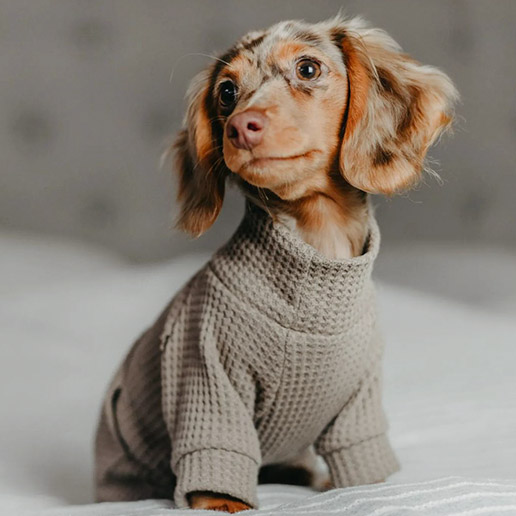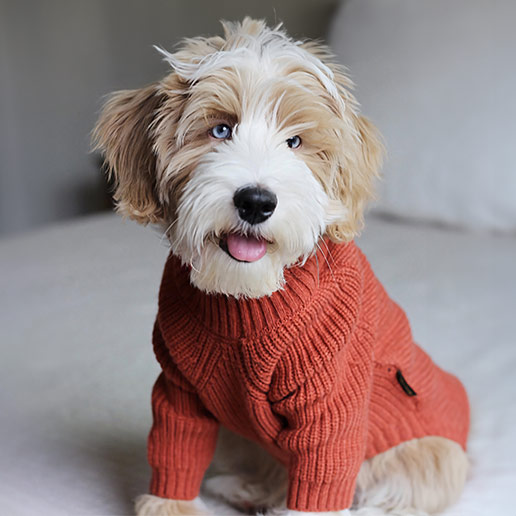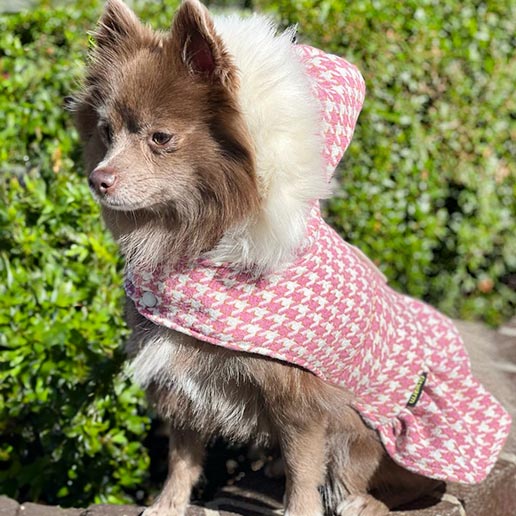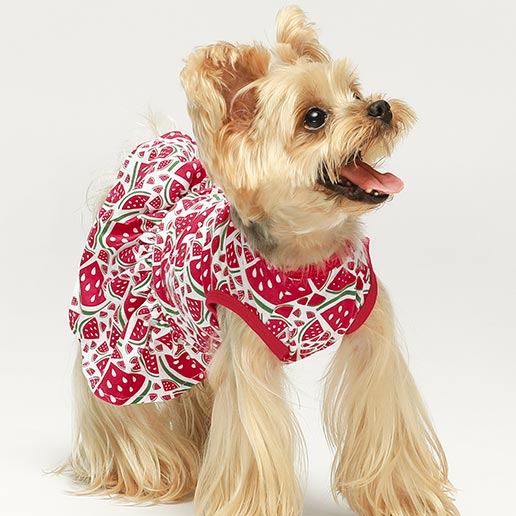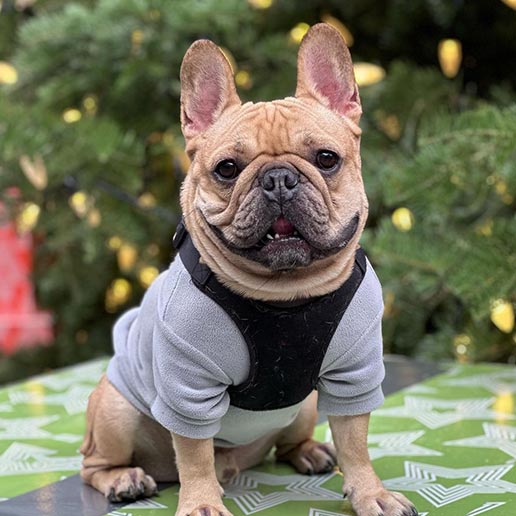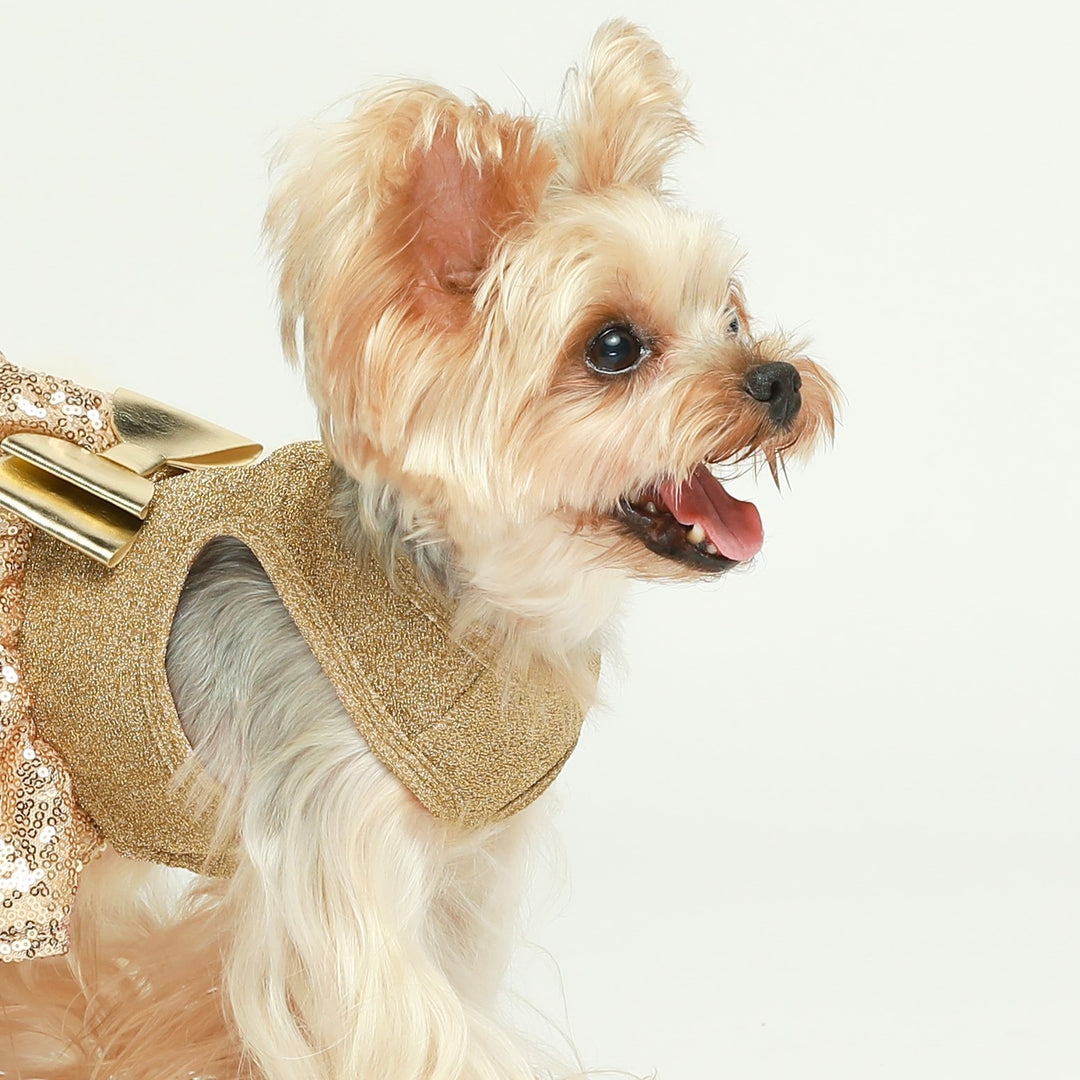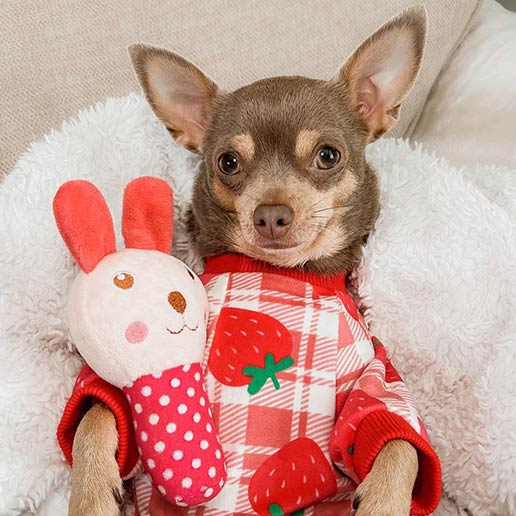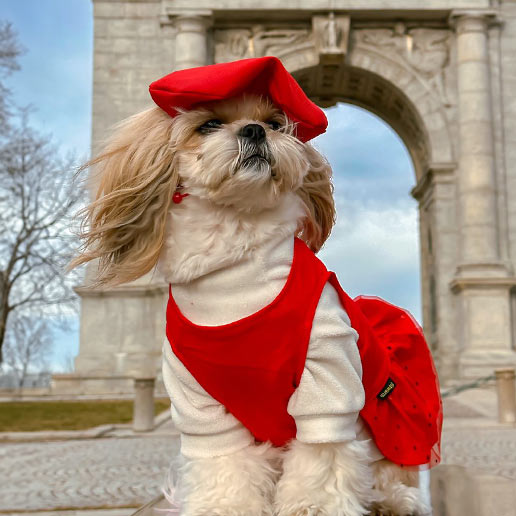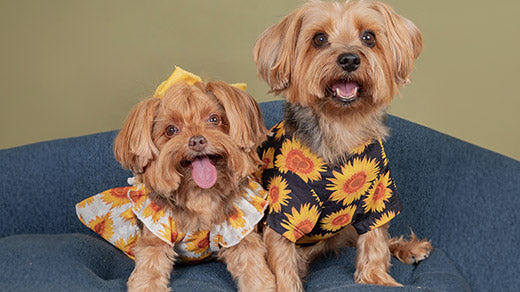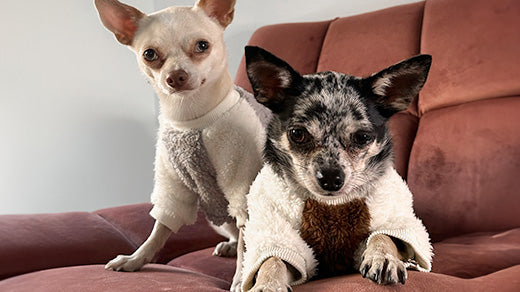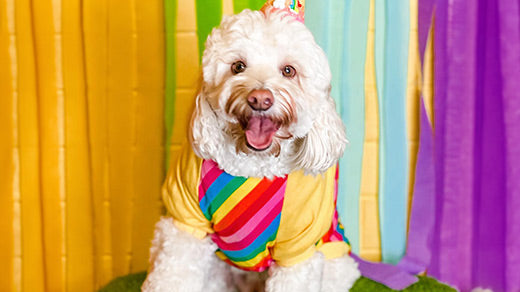Do Dogs Like It When You Hug or Kiss Them?
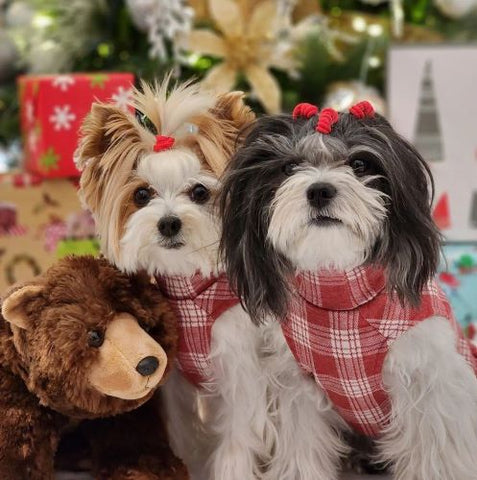
Instagram:sashaandyuna
Yorkies in Cute Plaid Dog Dresses
Do Dogs Like Hugs and Kisses?
Dogs don't naturally understand what human hugs and kisses actually mean. Unlike humans, canines don't use full-body squeezing or lip-to-face contact to show affection within their species. So, when people hug or kiss dogs, the pups don't innately perceive it as a token of love. However, through positive reinforcement over time, many dogs learn to associate human hugs and kisses with good things like belly rubs, cuddles, treats, and praise. So, they put up with our tactile expressions of affection, even if not necessarily emotionally crave it themselves.
Instagram: chowderthedog2021
Mini Goldendoodle in a Cozy Turtleneck Dog Pajamas
Signs a dog tolerates or enjoys hugging/kissing include tail wagging, approaching closer, gentle "kissing" licks back, relaxed muscles, and loose body language. But signs of dislike or stress include turning away, yawning, pinned back ears, tucked tails, and stiffening up. These signal discomfort. While some exceptionally affectionate breeds like retrievers seem more receptive to physical handling, many dogs never learn to love the feeling of restraint from embraces or direct face contact. It's crucial to respect when dogs communicate "no" through body language on unwanted touch, even without aggressive growls. Having mutually understanding, consent-based relationships makes for happier human-canine bonds.
Reading Your Dog's Body Language
While some dogs relish human contact cues like petting, hugging, or kissing, interpreting canine body language accurately reveals when dogs grow uncomfortable with physical handling. Prioritizing consent means immediately easing up when signals communicate distress. Subtle discomfort signs include:
Instagram:wakanda_shihtzu
Shihtzu in a Ruffle Sleeves Plaid Sweater Dog Dress
Stiffening Up:
If previously relaxed muscles abruptly tense up during interaction, it often indicates anxiety or uncertainty rising despite a lack of aggression. Honor requests for personal space.Avoiding Eye Contact:
Turning their face fully or partially away from you or closing their eyes demonstrates dogs mentally shutting down touch engagement. Allow them the freedom to dictate participation.
Instagram:mischievous_westie_fergus
Westie in a Penguin Dog Pajamas
Visible Eye Whites:
Whale or half-moon eye shapes expose more white area, widening an on-edge stare. It warns of escalating fear so cease triggers prompting this reaction.Ears Pinned Backwards/Flattened:
While upright ears typically signal interest or happiness, ears folded tightly back against the head reveal festering stress or annoyance at handling.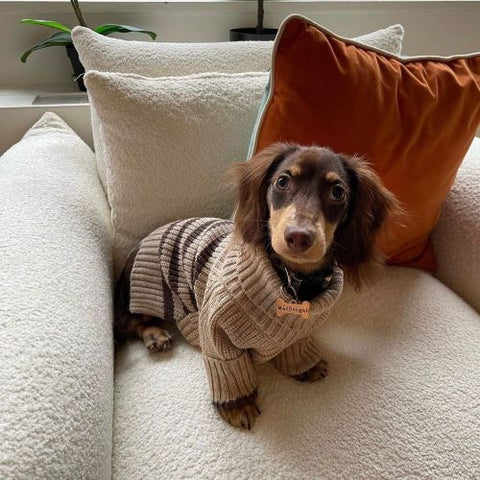
Tail Drooping Down or Tucked In:
Happy tail wags give way to uncertainly lowered tails or tight tucks against their belly showing profound insecurity and unhappiness.Excessive Yawns Unrelated to Tiredness:
Frequent yawns absent sleepy contexts reflect psychological tension. Like humans under pressure, think of involuntary fidgeting. Allow dogs an affection break.
Quick Lip Licks:
Rapid tongue flicks not linked to tasting or greeting also indicate nervous energy. Ensure interaction stays below stress thresholds.Paw Lifting Off The Ground:
Floating paws hesitate touching down, mirroring internal ambivalence. Floating paws reflect mood uncertainty. Proceed affectionately with care.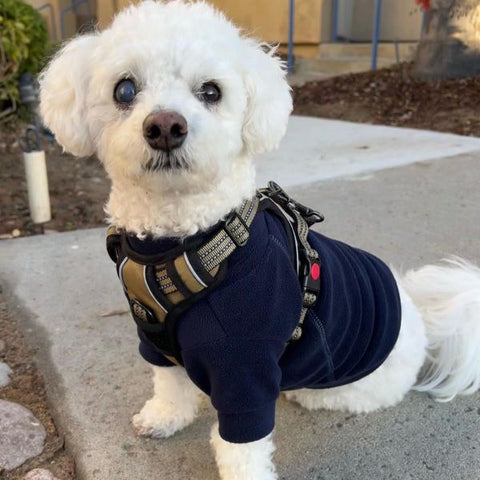
Instagram:baileybear_n
Bichon in a Turtleneck Knitted Dog Sweater
By carefully noting these common yet subtle communication cues amid interaction, dog owners avoid missing withdrawal requests dogs provide through polite body language dissent. Maintain consent-based relationships respecting canine personal agency and comfort zones surrounding touch, no matter how lovingly intended human contact aims through hugging or kissing dogs.
How to Show Love to Your Dog
While most dogs don't innately crave human-style physical affection like hugging, kissing, or petting, they gladly welcome other dog-appropriate expressions of care and praise from beloved owners. Some canine-friendly ideas include: Most pooches relish a good belly or back rub focused on scratching sweet spots they can't easily reach to bite playfully in return. Find and reward itchy trigger points!- Tug-of-war and Fetch Games
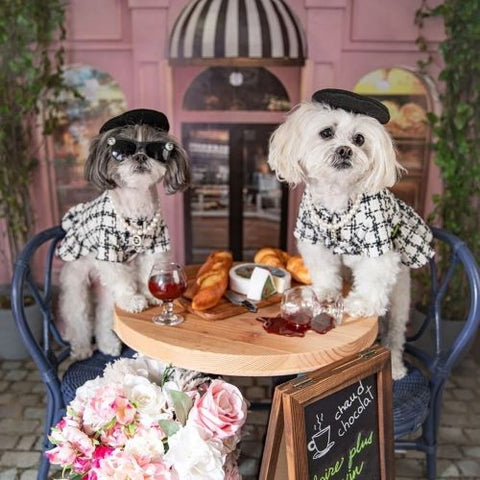
- Reward-Based Training
- Cozy Quiet Company

Instagram:estherthepoodle
Poodle in a Fancy Tulle Dog Dress
Trying this vocabulary of praise, play, and peaceful hanging out aligned with canine social instincts gets relationships speaking more fluently in dogs' affection dialect without misconceptions. Find their joyous language!
Interpreting Dogs' Cues Key to Healthy Bond
Science shows dogs don't innately enjoy human hugs and kisses but sometimes learn to tolerate them through positive associations with rewards like food and praise. However, many dogs dislike the restraint and facial pressure. Respecting their signals and consent allows for the healthiest bonds centered on their comfort needs first. Embracing dogs' affection style, even when unlike our own as fellow species, keeps the relationship grounded in mutuality. That's the root of real unconditional love.